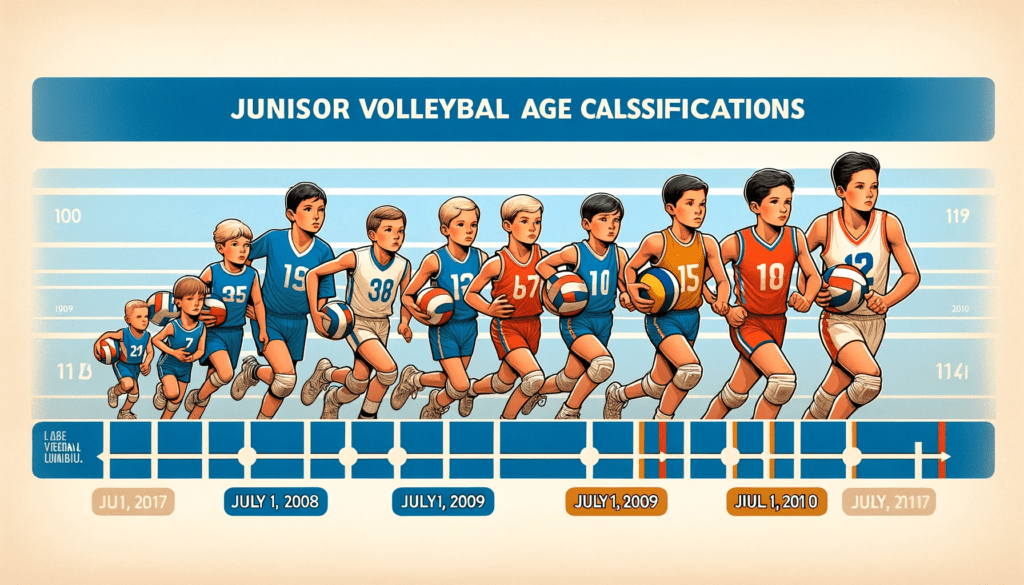Have you ever found yourself watching a junior volleyball game and wondered, “How old are these vibrant athletes?” Volleyball, a sport known for its energetic and dynamic nature, often sparks curiosity about the age of its junior players. Today, let’s dive into this topic and explore the enchanting world of junior volleyball, uncovering the age mystery that surrounds these young sports enthusiasts.
The Age of Aspiration: Junior Volleyball Demystified
Volleyball’s Young Champions
Junior volleyball is more than just a sport; it’s a journey of passion, discipline, and growth. But at what age does this journey begin? Generally, junior volleyball players range from 11 to 18 years. This age bracket is crucial as it’s a time of both physical and mental development. It’s during these formative years that young athletes learn the fundamentals of the sport, develop teamwork skills, and nurture their love for the game.
Key Milestones in a Volleyball Journey

- Beginner’s Enthusiasm (Ages 11-14): This stage is all about discovery and basic skill development. It’s where the foundation is laid.
- Skill Enhancement (Ages 15-16): Here, players start refining their techniques and understanding advanced game strategies.
- Competitive Edge (Ages 17-18): At this stage, players are honing their skills for higher-level competitions and possibly eyeing collegiate opportunities.

The Chronological Evolution in Junior Volleyball
A Look Back in Time
Interestingly, the age classification in junior volleyball hasn’t always been the same. Let’s take a brief historical detour:
- July 1, 2008: This date marks a significant point in junior volleyball age classification. The rules then were slightly different, shaping the way players were grouped in teams.
- July 1, 2009: The following year brought about subtle changes, reflecting the sport’s evolving nature and its adaptation to the needs of young athletes.
- July 1, 2010: By this time, further adjustments were made, showcasing the sport’s continuous effort to provide the best competitive environment for its young players.
Each of these dates signifies the sport’s commitment to evolving and adapting, ensuring that junior players have the best possible environment to grow and excel.

Unveiling the Magic of Junior Volleyball
Why Age Matters
In volleyball, age is more than just a number. It represents a phase in a player’s journey, each with its unique challenges and triumphs. It’s about matching physical abilities with mental and emotional growth. Ensuring that players compete with peers of similar age and skill level is crucial for their development and enjoyment of the sport.
The Role of Coaches and Parents
Coaches and parents play a pivotal role in nurturing these young athletes. They’re not just teaching volleyball skills but also life lessons. From handling victory and defeat to developing teamwork and leadership qualities, the influence of coaches and parents is immeasurable.
The Future of Junior Volleyball
As we look towards the future, junior volleyball continues to evolve. With each passing year, we see more talent, better training methods, and increased enthusiasm for the sport. It’s a field that’s constantly growing, bringing in more young players who dream of spiking their way to success.
Wrapping Up: The Age of Junior Volleyball
In conclusion, junior volleyball is a dynamic and evolving sport, with players typically aged between 11 to 18 years. It’s a journey of growth, where each age brings its unique set of challenges and opportunities. From the significant dates of July 1, 2008, to July 1, 2010, we’ve seen the sport adapt and grow, always with the best interests of its young athletes in mind.
So, the next time you find yourself watching a junior volleyball match, remember that you’re witnessing more than just a game. You’re seeing the future of the sport in action, with each player bringing their unique blend of youth, enthusiasm, and skill to the court. Junior volleyball isn’t just about how old the players are; it’s about the passion and dedication they bring at every age.
FAQs
Junior volleyball players are usually aged 11 to 18, a key period for skill development.
Since July 1, 2008, junior volleyball age classifications have evolved to better match player development stages.
Post July 1, 2009, junior volleyball saw refined age groups for enhanced competitive balance.
By July 1, 2010, junior volleyball further adjusted age categories, optimizing player growth and competition.
Age in junior volleyball ensures players compete with peers of similar skill and developmental stages.




